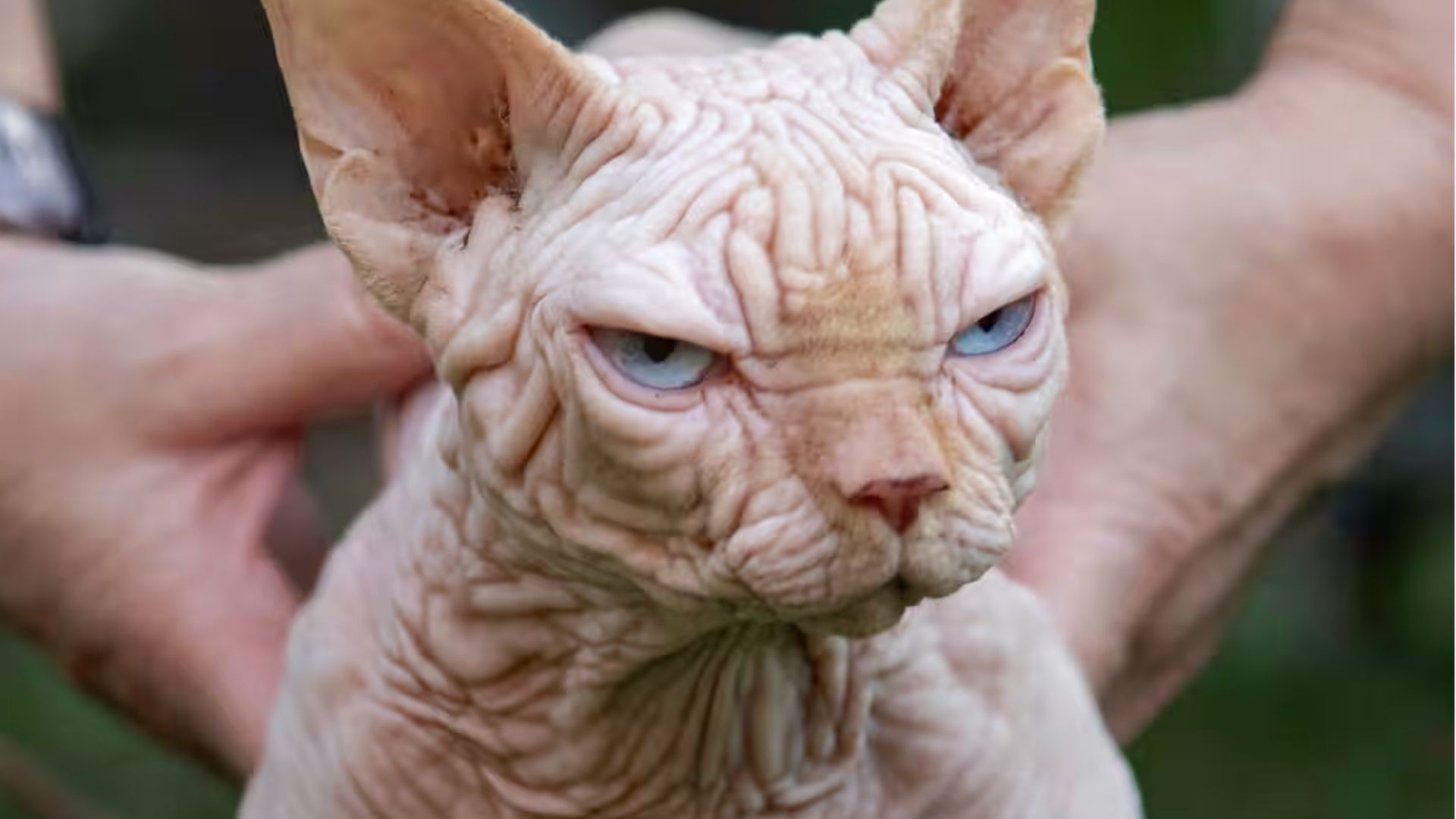Pedigree cat breeding has long had its controversies but a new trend for cats bred to look like American bully XL dogs could be one of the most worrying fads yet.
So-called “bully cats” originated in the US and are a result of mutant breeding. Unlike pedigree breeding, which focuses on keeping animals purebred, mutant breeding involves intentionally combining genetic mutations to create cats with a specific look. In this case, they mix the gene that causes hairlessness in sphynx cats with the gene responsible for the short legs of munchkin cats, making bully cats a munchkin-sphynx cross.
These cats share a close resemblance to bully dogs, a group of breeds characterised by a solid build, wide body and short coat. American XL bully dogs were banned in the UK in 2023. Recently, bully cats have made their way to the UK, where social media accounts promoting this new mutant breed have emerged.
https://youtu.be/3n0Q4RZB7lo
According to Marjan van Hagen and Jeffrey de Gier, animal welfare and reproduction experts at Utrecht University in The Netherlands, these mutations can have serious health consequences for the cats and limit their freedom of movement. Kittens already have a limited ability to regulate their body temperature and this is made even more difficult by hairlessness and makes them more suspectible to respiratory infections.
A lack of fur can also lead to sunburn and skin cancer in hairless cats. Like the sphynx, bully cats also lack whiskers, which cats depend on for communication, navigating their environment and gauging spatial dimensions.
Short-legged cats also face problems.
Short legs limit their ability to jump, can put cats at a disadvantage in fights and can lead to painful health conditions. Although breeders claim that bully cats are healthy and long-lived, it’s still too early to determine their long-term health and welfare.
Some breeders also say they are screening the cats they breed from for conditions such as heart disease. This can help prevent health problems, but it can’t overcome all of the health and welfare issues with mutant breeding.
A May 2024 study by veterinary epidemiologist Kendy Tzu-Yun Teng and colleagues assessed annual life expectancy in UK cats and found that the average cat lives nearly 12 years, but sphynx cats have the shortest lifespan — just 6.7 years. Bully cats, being both hairless and short-legged, may face twice the number of challenges encountered by sphynx and munchkin breeds.
In the wild, unrelated species that face comparable environmental challenges often develop similar traits, a process known as “convergent evolution”. Despite coming from different evolutionary paths, these species evolve to look and behave in similar ways.
Take the sugar glider from Australia, for example. It looks and behaves much like the US flying squirrel, yet one is a marsupial and one is a mammal. Both animals faced the problem of how to move efficiently in a forest canopy, and evolved the same solution.
 Sugar gliders are not related to flying squirrels. EPA-EFE/HOTLI SIMANJUNTAK
Sugar gliders are not related to flying squirrels. EPA-EFE/HOTLI SIMANJUNTAK
In a similar way, many domesticated animals share common traits, collectively known as “domestication syndrome” including increased tameness, juvenile behaviour, floppy ears and smaller teeth. Traits that helped them adjust to life with humans. However, the resemblance between bully cats and dogs doesn’t come from this gradual, natural process. Instead, it’s the result of selective breeding based on aesthetics.
Veterinarian and animal welfare scientist Wenche Farstad summarises this as breeding for “curiosity or cuteness” in their 2018 paper on ethical breeding. While people normally find traits like round eyes and short nose length to be particularly cute, breeding for hairlessness and shorter legs is better aligned with the concept of breeding for curiosity.
In this case, the resemblance between bully cats and dogs is more about human-driven design, where appearance is prioritised. The bully cat seems to have been intentionally bred to resemble the bully dog, perhaps due to their perception among young men as a kind of status symbol.
Could bully cats survive without humans?
Mutations that hinder survival and reproduction typically become rare in nature. However, humans bypass natural selection by choosing which animals breed, allowing traits that would be disadvantageous in the wild to persist.
Examples of this can be seen across a number of domestic species. For example, due to the muscularity of their calves, Belgian Blue cattle require caesarean sections in more than 90% of births.
 Sphynx cats were used to create the bully cat mutant. EPA/TOMS KALNINS
Sphynx cats were used to create the bully cat mutant. EPA/TOMS KALNINS
Another farm animal, the modern broiler chicken, has been bred to grow much faster than its wild counterparts. If allowed to live longer than their usual slaughter age, many would not survive. Bully cats would probably also struggle to survive in the wild, without humans to care for them.
Crossbreeding programs can help increase genetic diversity and reduce harmful traits in many breeds. However, for mutant breeds like the bully cat – where hairlessness and short legs are defining traits – this isn’t a realistic solution.
Prospective pet owners need to be aware of the risks associated with owning mutant and experimental breeds. Consumers hold purchasing power. We can discourage breeders from prioritising aesthetics over the health and welfare of the animals by refusing to buy breeds with extreme traits.
A fashion toward ethical breeding could ensure future cats are healthier, happier and free to enjoy natural feline behaviour like climbing, jumping and lounging in the sun. We should let cats be cats.
This story was first published in The Conversation. Grace Carroll is a Lecturer in Animal Behaviour and Welfare at the School of Psychology, Queen's University Belfast.




 Sphynx cats were used to create the bully cat mutant. EPA/TOMS KALNINS
Sphynx cats were used to create the bully cat mutant. EPA/TOMS KALNINS